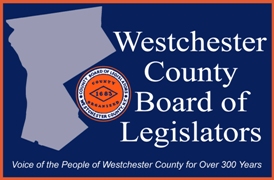COMMITTEE ON HOUSING
MINUTES: Meeting of August 1, 2005
Housing Committee Members in attendance: Chair: Lois Bronz; José Alvarado, Vito Pinto
Others in attendance: CEO: B. Randolph; Planning: Michael Lipkin; BOL: B. Dodds; Community Housing Innovations: Alec Roberts, Housing Opportunity Commission: George Raymond, Richard Hyman; Housing Action Council: Nancy Bensal; Working Families Party: David Schwartz.
Item discussed: Draft Affordable Housing Allocation Plan
With a quorum present, Chair Lois Bronz called the Committee on Housing to order at 2:10 pm and introduced George Raymond, Chair of the Housing Opportunity Commission.
George Raymond explained that the Rutgers University Center for Urban Policy Research (CUPR) determined that between the years 2000 and 2015, the County needs 10,768 units of affordable housing.
On the theory that the County does not have the power to build anything anywhere, the success of any undertaking that tries to solve the housing problem is up to the municipalities.
In the 1993 Housing Implementation Plan, four factors were given equal weight: land area of the municipality, job growth in the previous decade, concentration of overcrowded housing units and aggregate income. In the current study, two new factors have been added: public transportation—the extent of Bee Line bus routes in municipality, and watershed lands—land in upper county where development impacts the watershed.
Using regions identified in “Patterns for Westchester,” the County Planning Board’s Comprehensive Development Plan, the county has been divided into five sub-regions—Bronx River Valley, Central County, Hudson River, Long Island Sound, and North County. Decisions and negotiations can be worked out between municipalities in a given region or between sub-regions. Each municipality’s numbers would be published every six months and if there is no agreement between municipalities, the sub-region interim numbers remain fixed.
Richard Hyman, HOC consultant, explained Tables A,B &C in the Plan. The unmet need for 1990-2000 of 3,360 units continue as an obligation of under-performing municipalities. The new goal reflects the balance or credit from the previous allocation carried forward.
Leg. Vito Pinto said some legislators have said we shouldn’t be giving away property or requiring somebody to get something done to get affordable housing—how do you deal with getting it without going quid pro quo?
Deputy Comm. Norma Drummond responded that there are others who think that municipalities shouldn’t be getting CDBG dollars without affordable housing. How do you balance it?
Raymond: It has become obvious that more frequently there is a crisis in every metropolitan area in the country and something has got to give.
Pinto: Rather than waiting for municipalities to come to the county, there has to be an outreach and follow-through by departments or the committee on pieces of property that the county owns. The whole issue of home rule ‘we will take care of our own, don’t bother us.’ And it varies from community to community.
Drummond: Municipalities ask for help in developing affordable housing a lot more often than you think. It is just that it takes so long to accomplish.
Discussion ensued about the problem of too little affordable housing around major metropolitan areas across the country. Leg. Alvarado said that in his three and a half years on the Board, he has voted for every affordable housing project and is amazed that there would be any resistance by other legislators. Leg. Bronz said one problem was an unsatisfactory definition. Affordable housing is also called: workforce housing, below-market housing, low-income housing, and “housing for people like us.” Some municipalities have inclusionary clauses that require project developers to allot a percentage of units as below-market or they may buyout for a fee to the municipal housing fund.
The Committee voted to support the Allocation Plan pending comments at the public hearing to be held by the Commission on August 10 at the Greenburgh Town Hall in White Plains. After the hearing, language may be altered and the committee may hold another meeting to review other possible changes. A final resolution will be signed out by the Housing Committee and submitted to the Board for approval. The meeting was adjourned by Legislator Bronz.


